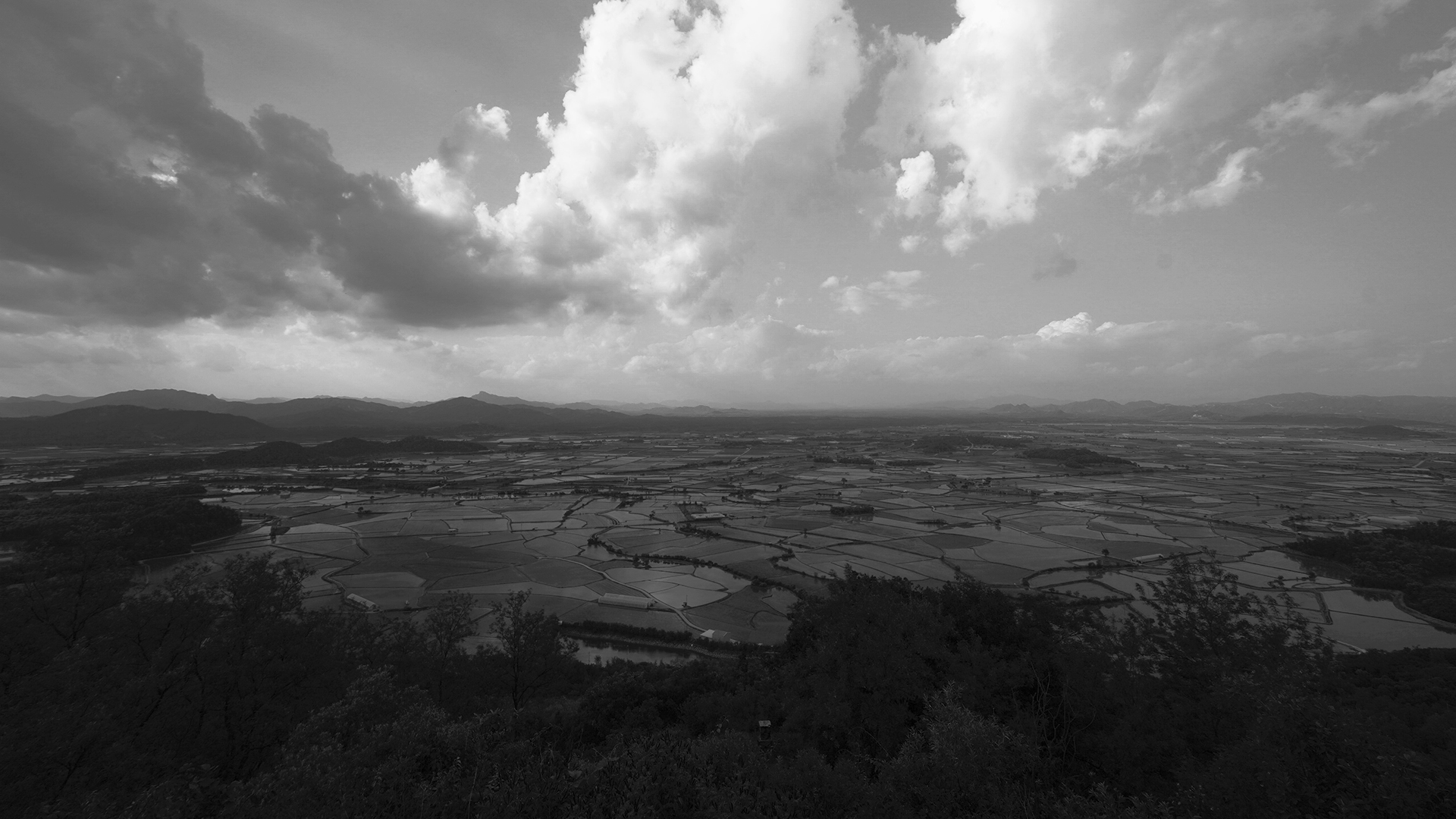The Demilitarized Zone (DMZ) between the Democratic People’s Republic of Korea (DPRK) in the North and the Republic of Korea (ROK) in the South is a 250 km long, 4 km wide military demarcation stretching from the East Sea to the Yellow Sea.

Workshop
DMZpace
30 May-3 June 2019
@ DMZ, CCL
Seoul National University
Seoul, South Korea
Exhibitions
@ Yeonnamjang Gallery Seoul
2 May-17 May 2020
@ Korean Cultural Center Paris
10 September-6 November 2020
The Demilitarized Zone (DMZ) between the Democratic People’s Republic of Korea (DPRK) in the North and the Republic of Korea (ROK) in the South is a 250 km long, 4 km wide military demarcation stretching from the East Sea to the Yellow Sea.
After the Korean War (1950-1953) was suspended with an ongoing truce – as of today, a formal peace treaty has not been signed – the Korean Armistice Agreement established the DMZ as a buffering space to weather hostilities between the two countries.
Since then, the DMZ has become a negative space, a negation of habitation as well as of war violence, letting the void replace conflict.
As a consequence of the more than 65 years long near absence of human activity, the land strip has become a verdant 984 square kilometers nature reserve where endangered flora and fauna species had the chance to regain space.
The DMZ has become a testimony to unintentional beauty. Thriving vegetation and undisturbed wildlife now cover the painful, conflict-born void along the military demarcation.
Over the last few years, it has gathered international attention due to its symbolic value as well as to individual and bilateral bids by North and South Korea securing UNESCO Biosphere status for areas of the DMZ.
The unintended lush ecosystem is the result of military tension and yet un-reconciled historical wounds. Nature and the hollow marks of military activity on the landscape engage in a complex antithetical relationship.
Intermittently, the silence and stillness of the DMZ’s accidental ecosystem have been interrupted by the sound of landmines’ explosions, by propaganda and music blasted through loudspeakers on the South Korean side, traversing no man’s land to reach North Korean citizens.
The establishment of the DMZ has not prevented incidents and multiple casualties on both sides, for a total of more than 100 incidents. Moreover, the unidentified, not yet unearthed remains of fallen soldiers from the Korean War in what is now no man’s land represent a further un-reconciled wound affecting the DMZ.
After being seemingly absent from mainstream news for many years, almost gaining a taboo status, diplomacy along the DMZ is now fast evolving and subject to sudden steering.
After promising precedents of political détente, from April 2019 joint inter-Korean incursions in the landscape’s green hills are being planned to retrieve the remains of fallen soldiers around Arrowhead Hill, excavating, gathering and identifying what nature has covered.
Within the DMZ, the passing of time is kept by nature, by the pristine vegetation, by thriving wildlife including endangered species and by the spontaneous growth of rare plants. The time of the landscape and the time of accelerating political events merge at the demilitarized zone, engendering a unique, hybrid time frame.
The friction between the human desire to quickly process a painful past and nature’s generous patience conveys this incompatibility.
Environmentalists worry that the much anticipated peace process will go through at the expenses of the natural oasis. Such ecological concerns resonate with the risk that the speed and nervousness of détente will not leave thinking space to process change and envision how to unlock the unique potential of DMZ.
Given the unprecedented acceleration of diplomatic developments since 2018, said risk is now a live possibility of missing out on the possibility of exploring DMZ’s potential.
In a context of changing relationships and events, Hybrid Space Lab has been invited to work on the DMZ between North Korea and South Korea.
Seizing the window of opportunity of this unique moment, Hybrid Space Lab investigates how to unlock the reconciliation potential of this de-militarized buffer zone.
Hybrid Space Lab’s approach promotes the development of a creative outlook capable of transforming – inverting – the border phenomenology and performativity and turning DMZ into an eco-peace projective and ‘positive’ space.
How to unlock the reconciliation potential of a de-militarized buffer zone?